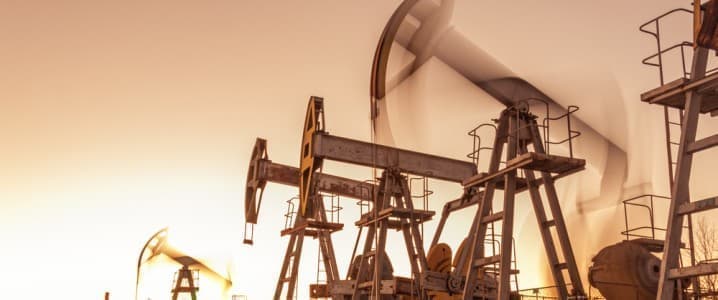The first signs of a slowdown in activity in the U.S. shale patch emerged earlier this year as declining oil prices prompted drillers to reduce the number of active rigs.
Then data suggested that well yields were also dropping—a sign of potential natural depletion that would make drillers think twice before going all in on output expansion.
Now, the financial results of oilfield service providers are adding to the growing body of evidence that despite the EIA's upbeat forecasts about record oil production, the industry was going its own way—and it is the way of caution.
The Financial Times reported that the reduced drilling activity that the Dallas Fed Energy Survey reported earlier this year was beginning to affect the financial performance of the companies that actually carry out that activity.
The report cites Liberty Energy's Chris Wright as saying on a call with analysts, "During the second quarter, we saw reduced frack activity that resulted in increased white space in our calendar."
In the presentation of the company's results, Wright also forecast lower activity in the U.S. shale patch over the second half of the year as a whole. This interestingly coincides with a recent production update from the Energy Information Administration.
Earlier this year, the EIA consistently predicted a new record high for U.S. oil production thanks to the shale industry. Now, it has changed its tune. In May, the EIA predicted that U.S. shale oil output would hit a record in June, at 9.5 million bpd. A month later, the agency reported in its June edition of the Drilling Productivity Report total estimated production for the month of 9.37 million bpd.
Output then inched up in July to some 9.42 million bpd across the big shale basins, but now the Energy Information Administration forecasts a decline in August to 9.397 million barrels daily.
"It is hard to be in the production business these days." This is what one of the respondents to the Dallas Fed's quarterly energy survey said in comments published with the second-quarter edition of the report. It found more signs of a slowdown as well as increased cautiousness among industry executives when production growth was concerned.
"Our country's leadership for the last two years has created a lot of uncertainty in the energy sector. The crystal ball says that this same leadership over the next two years will maintain that uncertainty and it will grow exponentially," another executive said for the survey.
Indeed, uncertainty seems to be here to stay, discouraging ambitious growth plans, especially in the context of cost inflation that, despite some encouraging signs from monthly CPI readings, is far from comfortable for many players in the shale field.
"The environment in North America has levelled off and we're hearing some of the customers requesting discounts, particularly in the more commoditised markets like pressure pumping," Baker Hughes' chief executive Lorenzo Simonelli said, as quoted by the Financial Times, confirming the perception of a slowdown despite relatively high oil prices on international markets.
There is also the gas conundrum to consider in the shale patch. Last year, thanks to the energy crunch in Europe, U.S. gas prices reached as high as $9 per mmBtu at one point. Now, that's collapsed to less than $3 per mmBtu. Gas rigs, therefore, are also declining in numbers.
The great thing about shale oil and gas is that producers can respond relatively fast to changes in demand patterns. The trouble is that demand uncertainty is plaguing the industry. It will continue to plague it until it becomes clear one way or another if the world is going into a massive recession or if it will just be Germany and the rest of the eurozone.
The more important factor over the longer term is well inventory. As the Wall Street Journal reported earlier this year, there has been concern among industry executives that the best inventory has been drilled through. It is, indeed, a concern that has been voiced repeatedly by Scott Sheffield, Pioneer Natural Resources' CEO.
"Most companies are drilling tier two and tier three inventories now," having tapped their best prospects, Sheffield told Reuters in an interview in January. "Less quality production is coming out of the Permian, out of the Bakken."
With such a combination of factors—lower inventory quality, higher costs, demand uncertainty, and an anti-industry government—it would be nothing short of reckless to keep boosting production.
So, the U.S. shale industry is doing what any industry would do under the circumstances, curbing production growth and waiting for signs that any growth-discouraging factors are about to change. The risk: a global supply squeeze.
"If you still believe the global demand picture for oil is higher over the coming years and the US isn't growing the way it used to . . . everywhere else has to fill that void," Raymond James analyst Jim Rollyson told the FT last week.
By Irina Slav for Oilprice.com
More Top Reads From Oilprice.com:
- Domestic Mining: The Obvious Solution To America’s Mineral Crisis
- Escalating Geopolitical Tensions Begin To Chip Away At Globalization
- Erdogan’s Surprise Western Pivot


















